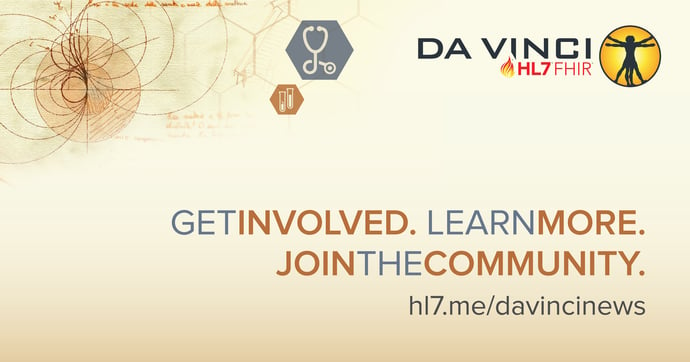
Just over one month ago, I leaped into HL7 FHIR through involvement of the Da Vinci Project. Having worked in the healthcare technology industry for more than 10 years aligned with implementers of payer-provider workflows, data reporting and analytics, it was compelling to see how the proverbial “sausage is made” in the standards world. I made my debut by attending the HL7 FHIR Patient Access API Implementation event in August and I have since attended the September HL7 Connectathon.
Here are three key takeaways from my first month in the FHIR community.
The Room Where it Happens: Developing a Standard Doesn’t Transpire Behind Closed Doors By the Elite.
As an implementer reading a standards’ implementation guide (IG), it’s inevitable to reach a point of confusion where you say to yourself, “Clearly the writer of this didn’t consider my business need.” HL7 has a robust process that prioritizes adoption and reaching consensus among the public community before stamping approval on a standard. The continuous improvement method includes one or more balloting cycles (where the public community essentially critiques the IG and provides detailed feedback) as well as multiple connectathons (at which IGs are tested against by the community), providing ample opportunity for feedback from the community to evolve the IG. The HL7 Da Vinci Project, as well as other FHIR accelerators, have reference implementation prototypes, documented examples, sample test scripts and weekly calls open to the public, encouraging participation throughout the development lifecycle.
Accelerators like Da Vinci Are Cooking Real Recipes on FHIR
Like most sectors in healthcare, the new acronyms flood in quickly for a newcomer, and it’s no different with FHIR. I heard a great analogy to understand the layers of standards: FHIR is the commercial test kitchen that holds vast possibilities, with US Core and USCDI providing guides on what to include in your standard household kitchen. Then, the Da Vinci IGs are the recipes for cooking an actual dish. Becoming a master chef in a commercial kitchen would be super, but a more realistic goal might be to leverage a recipe already tested that your family is likely to eat.
HL7 Connectathons Are Multifaceted
The coffee and cookies were missed at HL7's September Virtual FHIR Connectathon, but the Da Vinci successes were plentiful.
- In the Payer Data Exchange’s Formulary track, one participant brought a server and without any prior collaboration, the reference client could access formulary information correctly the first time. Tested. Passed.
- The Clinical Reasoning track joined with Da Vinci Gaps in Care to successfully test end-to-end gaps in care reporting including sharing open gaps and providing information to close gaps. The Risk Based Contracts Member Identification IG also complements Gaps in Care to provide the list of attributed members. This was a great demonstration of how multiple IGs can be implemented together to streamline a highly manual workflow (secure email and spreadsheets are the reality for some payers and providers today.)
- The deep discussions of those involved with Payer Data Exchange (PDex) around how the IG meets the CMS Interoperability and Patient Access final rule and complements US Core, but adds useful elements like device vs. implantables, so wheelchairs don’t come through as an implantable devices, for example, were inspiring. It was also encouraging to hear that CAQH is actively working on FHIR endpoint directories to move the needle forward for scalable systemic data sharing.
- The Burden Reduction track, appropriately named to reduce the administrative burden of utilization management, specifically prior authorization (PA) workflows, gave a demonstration of the Da Vinci IGs – which included Coverage Requirements Discovery (CRD), Documentation Templates and Rules (DTR) and Prior Authorization Support (PAS) IGs – using FHIR to enable automated submission of required PA documentation, complete with a pre-populated questionnaire between EHR and payer system. The dream of real-time PA approvals for treatment across pharmacy and medical happening so smoothly the patient is hardly aware feels like less of a distant fantasy now.
The HL7 Da Vinci Project aims to shatter silos so often seen within the industry. In addition to applying the collaborative, inclusive methodology to developing standards and help the market meet ONC and CMS rules with freely available resources, the Da Vinci Project is an amazing community of passionate, smart, cookie-eating people that are accelerating data interoperability with the spirit of improving the quality of care for all. I’m honored to participate, because at the end of the day, we are all consumers of our own healthcare system.
Are you actively involved yet?
Join the Community
To learn more and join the community, visit hl7.me/davincinews.


